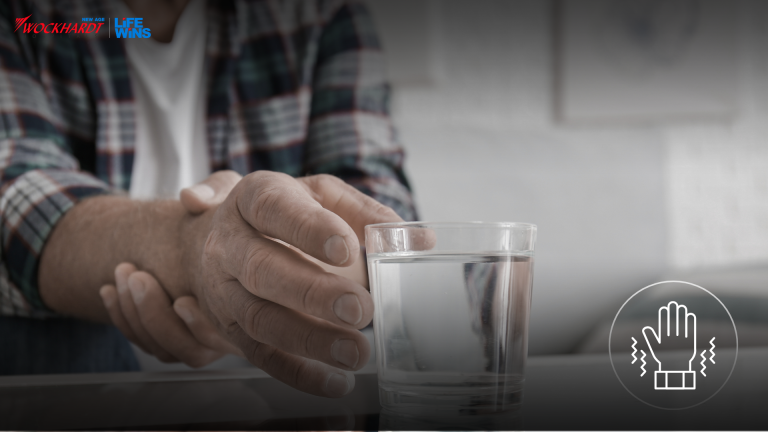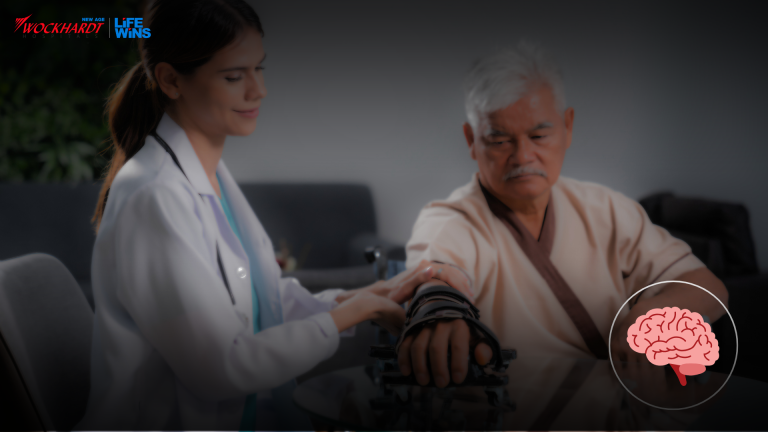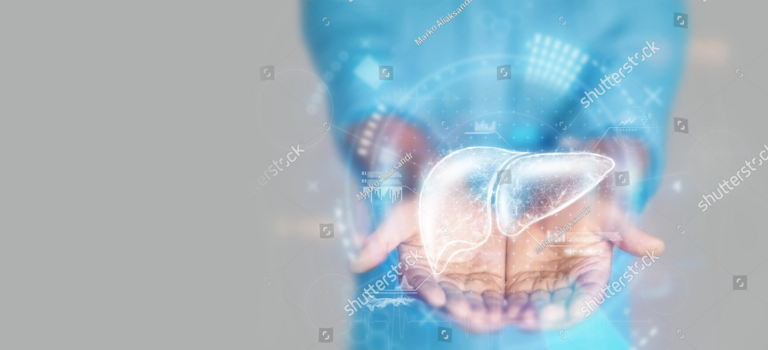8 Best Urologists Share Advice on the Early Warning Symptoms of Prostate Cancer

Here are some suggestions from the best Urologist to assist in detecting the early signs of prostate cancer. Dr. Himesh Gandhi: Prostate cancer is the most common cancer in men. When cells in the prostate begin to grow out of control, prostate cancer may develop. While early-stage prostate cancer is highly asymptomatic, advanced prostate cancer may cause symptoms such as burning or pain during urination. Difficulty urinating or trouble starting and stopping urination, more frequent urges to urinate at night, loss of bladder control, decreased flow or velocity of the urine stream, blood in the urine (hematuria), blood in semen, erectile dysfunction, Painful ejaculation. However, many patients with advanced-stage prostate cancer do not exhibit urinary symptoms. Diagnosing even more advanced stages of prostate cancer remains heavily dependent on PSA monitoring and digital rectal exam performance. Dr. Waheed Zzaman: Prostate cancer develops in the prostate gland and is a slow-growing tumor that takes years to progress. The top signs of prostate cancer are trouble urinating, blood in the urine and semen, bone pain, weight loss, and erectile dysfunction. Sometimes prostate cancer mimics enlarged prostate symptoms. Many patients are asymptomatic and present only with low back pain and weight loss. Early-stage prostate cancer may be curable. People should go for serum PSA screening at 50 yrs and above. A DRE (digital rectal examination), an ultrasound, and a multiparametric MRI of the prostate, and based on all this, we plan for a TRUS-guided prostate biopsy. ROBOT-assisted Radical prostatectomy is the treatment of choice, and it is a minimally invasive surgery with less blood loss, early recovery, and surgery with precision. Dr. Anubhav Raj: Prostate cancer is one of the leading causes of morbidity and cancer-related deaths in Western countries and India. Most of the time, it is diagnosed at an advanced stage, making it difficult to treat. It is necessary to know the early symptoms of prostate cancer: painful urination, poor flow, increased frequency, a sudden urge to void, or blood in the urine. If you experience such symptoms, especially after the age of 40, consult a urologist at the earliest opportunity so that he can diagnose your disease timely with a simple examination and tests and start the correct protocol-based treatment. Dr. Ketan Desai, MS (SURG), DNB (SURG), MCh (Urology) Consultant Urologist and Specialist in Robotic Surgery, Wockhardt Hospital, Mumbai Nowadays, the detection of carcinoma of the Prostate has become widely available. Serum Prostate Specific Antigen is the tumor marker specific and highly sensitive for diagnosis, follow-up, and prognostication of the disease. It has become a standard test in most health check-up Programs, offered to most men above the age of 55 years or even earlier if an index patient is suffering from the disease in the immediate family. Early diagnosis of any cancer is highly pivotal in improving its cure rates and increasing the overall longevity of cancer-specific survival. In addition, we have novel minimally invasive surgical options like Robot-assisted Laparoscopic Radical Prostatectomy or non-invasive treatment options like External Beam Radical Radiotherapy or Brachytherapy in the successful treatment of early cancer of prostate. Dr. Varun Agarwal: The prostate is an integral part of the male reproductive system. It’s about the size of a walnut, and it can cause serious consequences if left unchecked. Prostate cancer represents the second most common cancer in men globally. If diagnosed early, the survival rate for prostate cancer is high. Most people with prostate cancer don’t have any signs or symptoms, but there are some changes in early prostate cancer that you may notice and should bring up with your doctor. Increased frequency of urination, especially at night, urine flow is weak or slow, painful or burning urination, blood in urine, and sudden stoppage of urine. Many symptoms may indicate advanced cancer, like bone pains, weakness in the legs, and paralysis. So it is vital to beware of all the signs and consult a urologist. Dr. Caranj S. Venugopal: Prostate cancer is the third most common cancer in India among males. As with any cancer, early detection and treatment is the key to curing cancer. Unfortunately, sometimes there are no symptoms, but a few warning signs we often ignore are pain or burning while urinating, a high frequency of micturition – especially at night, difficulty in starting urination, the sudden onset of erectile dysfunction, and blood-stained urine. People with a family history of prostate cancer should start getting screened for prostate cancer at least at the age of 50. Regular screening for prostate cancer includes a urologist consultation and examination, including a digital rectal examination, a serum PSA blood test, routine urine analysis, and an ultrasound scan of the prostate gland. Dr. Yusuf Saifee: Prostatic enlargement (BPH) is a natural part of aging, like greying of the hair and wrinkles in the skin. So all elderly males above 50 years of age will have varying degrees of urine problems because of BPH, like increased frequency of urination, a weak stream, or peeing in stops and starts. Few treatment options are available for BPH, including medication and endoscopic or laser surgery. Although BPH is not prostate cancer, its symptoms are similar to those of prostate cancer. So if you are experiencing urine problems, discuss them with a urologist to rule out prostate cancer. Robotic technology has proved to be a boon for prostate cancer surgery. With robotic prostate cancer surgery, there is negligible pain and a quick return to work. Dr. Jamal Akhtar: The prostate is a male accessory sexual organ located at the bladder and neck. It has a crucial role in the liquefaction of semen and helps with fertility. A prostate cancer diagnosis is vital as its incidence and prevalence increase because of increased life expectancy. It is a very slow-growing cancer. Risk factor for prostate cancer involves family history and African American origin. The majority of patients are asymptomatic. Recent-onset LUTS symptoms may include increased urinary frequency, urge incontinence and dysuria, hematuria, hematospermia, retention, and erectile dysfunction. We recommend PSA screening for prostate cancer. For diagnosis,
Why Heart Attacks are Increasing in India?

A Cardiologist explains the reasons behind the increased heart attack cases among young people. He also suggests going for some tests to check if your heart is functioning properly Incidences of heart attacks among younger people are increasing in India. We have seen many young people dying of heart attacks after the COVID-19 outbreak. A hospital in Mumbai has reported that cases of heart attack in its emergency ward have gone up by 15 to 20 percent in the past 2 months. Concerningly, it is majorly affecting the younger generation from the age group of 25 years old. Dr. Ravi Gupta, Consultant Cardiologist Wockhardt Hospitals, Mumbai Central, cited diabetes, sedentary lifestyle, air pollution, stress, heavy workout, and steroids, as factors contributing to increasing cases of young heart attacks. According to him, Indians are genetically prone to develop heart attacks, and the adoption of the western lifestyle has further increased the risk. Do not ignore chest pain Recently a 28-year-old patient, named Abhijeet Kadam, was diagnosed with a heart attack at the emergency ward of Wockhardt Hospitals, Mumbai Central. Before he was brought to the hospital’s emergency room, the patient had complained of chest pain radiating to the left hand. He was under stress for the past 3-4 days which resulted in myocardial infarction, according to Dr. Ravi Gupta. ECG revealed an “Anterior Wall Myocardial Infraction” and immediately, he was taken for a coronary angiography on the same day of the admission. The coronary angiography was suggestive as the biggest artery LAD was 100 percent occluded with a clot which was removed followed by the stent. The patient is stable, recovered, and was discharged last week, the doctor informed me. What Are the Four Silent Signs of a Heart Attack? Subtle symptoms that are frequently ignored or mistaken for other causes can coincide with silent heart attacks. 1. Chest Pain During a quiet heart attack, chest pain may be minimal or nonexistent. Your chest may feel tight, uncomfortable, or as though something is squeezing it. It may be easier to ignore this pain since it may be brief or sporadic, in contrast to the severe pain of a usual heart attack. 2. Shortness of Breath You could have inexplicable dyspnea or a sense of being out of breath during a silent heart attack; moreover, disorientation can often be experienced. Many times, these symptoms are confused for respiratory problems or exhaustion. 3. Nausea When there is no obvious digestive reason for nausea or vomiting, it may be a subtle signal of a silent heart attack. It might be misdiagnosed as a viral illness or gastric problems. 4. Cold Sweat Unexpected cold sweats may be a sign of a silent heart attack, particularly if they happen without any physical effort or tension. They might be misinterpreted as a response to variations in temperature. Main Reason for Heart Attack in India The common sedentary lifestyle and poor nutrition are the main causes of heart attacks. Youth who lead modern lifestyles are more likely to suffer from heart attacks. Preventive Measures to Reduce Heart Attack There are several actions you may take to lower your risk (possibility) of developing heart disease, including: Treatment and Surgery for Heart Attack The kind of treatment used for a heart attack varies depending on whether blood flow is completely or partially blocked. Medication: Prescribed drugs such as antiplatelets, beta-blockers, and statins to manage blood clotting, control blood pressure, and regulate cholesterol. Surgical and Other Procedures: A treatment or surgery to unblock a clogged artery may be necessary if you suffer a heart attack. The following surgical processes are used to treat heart attacks: Check blood sugar and BP regularly Dr. Ravi Gupta advises that we should check blood sugar and blood pressure regularly, even if we don’t have any symptoms. It is possible that you could have high sugar or BP, but you’re not aware of it, as initially, these two conditions show no initial symptoms. The Cardiologist also recommends taking stress tests, 2D Echo test, Cholesterols, and ECG, to ensure that our heart is functioning correctly. Cardiovascular diseases (CVDs) killed more than 17 million people in 2019, out of which 85 percent suffered a stroke and heart attack, as estimated by the World Health Organization (WHO). A quarter of all the CVD deaths were reported from low and middle-income countries, it said. Dr. Ravi GuptaConsultant CardiologistWockhardt Hospitals, Mumbai Central To book an appointment call: +918291101001 Source: https://www.thehealthsite.com/news/heart-attack-cases-go-up-by-20-in-2-months-mumbai-hospital-940361/ FAQs on Heart Attack Cases in India Q. What is one rule for surviving a heart attack? During a heart attack, taking an aspirin may be beneficial because it keeps the clot from becoming larger, allowing the body to break down the blood clot. Q. Why are heart attacks increasing these days? Heart attacks can occur in people due to factors such as sedentary lifestyle, unhealthy dietary habits, and high blood pressure. Q. Why are young people having heart attacks? Young individuals are more likely to suffer heart attacks due to sedentary lifestyles, inadequate nutrition, elevated stress, smoking, and underlying medical issues; these factors highlight the significance of preventative actions. Q. Can a 25-year-old have a heart attack? Yes, although uncommon, a 25-year-old can have a heart attack. Genetic factors, unhealthy lifestyle choices, substance abuse, and underlying medical conditions may contribute to cardiac issues at a young age. Q. Are heart attacks painful? The majority of heart attacks are characterised by left or central chest pain that either lasts for several minutes or periodically returns. Q. Can we check heart blockage at home? No, checking heart blockage at home is not possible. Diagnostic tests such as angiography, CT scans, or echocardiograms are required, and these should be performed by medical professionals.
The Four Stages Of Fatty Liver Disease- Explained
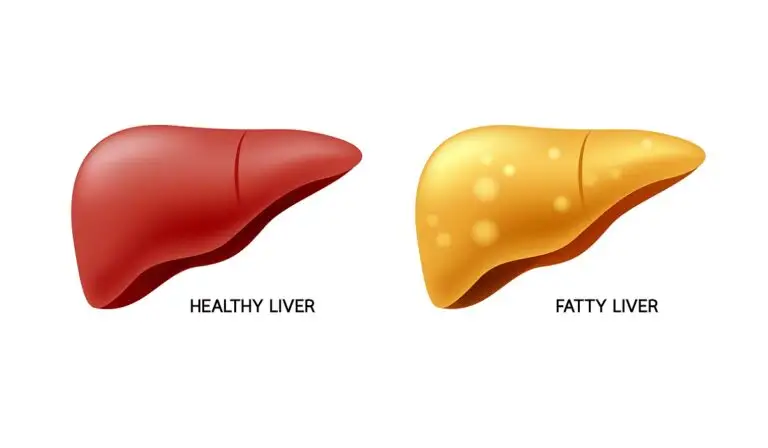
Fatty liver is a medical condition associated with the accumulation of fat in a person’s liver that can over time damage its function. Medical experts have identified two types of fatty liver disease, one in which a person only has fat but no damage to the liver, it is called non-alcoholic fatty liver disease (NAFLD). In another, the accumulated fats show signs of inflammation and cell damage which is known as non-alcoholic steatohepatitis (NASH). People who drink too much alcohol are highly prone to contract the illness. In a recent interaction with Hindustan Times, a medical expert highlighted the four stages when one should start worrying about fatty liver. Worrying signs about fatty liver Consultant Gastroenterologist, Dr. Pratik Tibdewal, who works at the Wockhardt Hospitals in Mumbai said that the disease occurs in four stages. First stage: The expert denotes this stage as ‘no red flag’ as it references when fats begin to build up in the liver without any cell damage or inflammation. Most people don’t even realize that they carry the sickness at this stage. Second stage This stage denotes the time when the accumulated fat becomes inflamed and results in damaging liver tissues. If the condition becomes serious it can lead to scarring of the liver and fibrosis. Third stage In this stage, the scarring of the liver becomes visible and the inflammation also affects the blood vessels. One must seek immediate help to reduce the scarring to prevent further progression and damage. Fourth stage The expert suggests the fourth stage is called cirrhosis, wherein the issue becomes lethal as the function of the liver completely stops. The signs and symptoms include pale skin, pain in the lower right of the ribs, swelling, bleeding, and more. In serious cases, liver transplantation is also recommended for patients at this stage. What are the risk factors for developing a fatty liver? While the exact cause of fatty liver has not been traced yet but a report by Hopkins Medicine suggests that obesity is a common factor that leads to the sickness. The problem is also found in people who have high blood pressure, diabetes, and high-fat levels. Dr. Pratik TibdewalConsultant GastroenterologistWockhardt Hospitals in Mumbai To book an appointment call: +918291101001 Source: https://www.news18.com/news/lifestyle/the-four-stages-of-fatty-liver-disease-explained-6728005.html
Successful Kidney Transplantation Surgery, Nashik

We hear stories of unbreakable brother-sister bonds. Another incident that strengthened this bond further took place in Nashik’s Wockhardt Hospital wherein a sister gifted a new life to her brother by donating her kidney. Nephrologists Dr. Anirudha Dhokare and Dr. Shyam Pagar at Wockhardt Hospital, Nashik, and their team took up the challenge to perform this surgery successfully. Asif Pathan, a 32-year-old from Nashik, was suffering from kidney disease for the past two years. Initially, he underwent various treatments for a year but couldn’t find any relief. An initial check-up revealed that both his kidneys had failed. His world came crashing down upon learning about dialysis. Finally, he was put on dialysis, and continued for a year. This young patient had a blood pressure problem and weakened lungs after Covid. At that time, his sister stood firmly by his side. Of course, her father-in-law’s family gave her that much-needed strength. Since there are still many misconceptions about organ donation or kidney donation in society, it is not easy to come forward and donate a kidney. Nephrologists Dr. Anirudha Dhokare, and Dr. Shyam Pagar, and their team gave a new life to the patient by performing a successful kidney transplant. Nephrologists Dr.Anirudha Dhokare, Dr. Shyam Pagar, Uro surgeon Dr. Nandan Vilekar, Dr. Pratikshit Mahajan, and Dr. Pranav Chhajed did the work of the transplant. connecting blood vessels was done by Dr. Rahul Kaiche. anesthetists Kirandeep Sandu and Yogesh Patekar played an important part in the painless procedure. The young man was on dialysis for a year, not having enough blood, making kidney transplants somewhat challenging due to frequent high blood pressure. However, our entire team managed to overcome all the challenges and performed a successful transplant on this patient. After the transplant, the life expectancy of the patient will increase. Due to the low rate of brain-dead, kidney, and other organ donation in India, living donors will have to donate organs. If there is no living donor, the patient will have to stay on dialysis for a long time. Organ donation is the need of the hour. Organ transplantation remains the only option for this patient to live a long life. Source: https://contentmediasolution.com/health/sister-donates-kidney-to-her-brother/
India Records Cases of Omicron BF.7 Variant
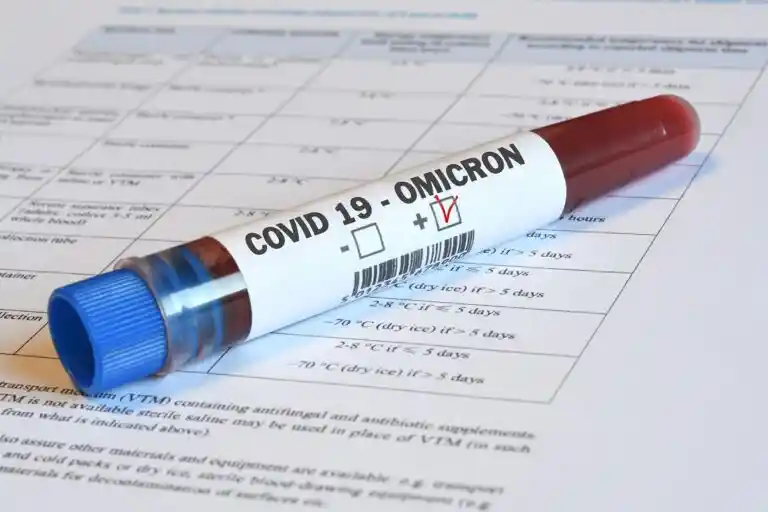
In a statement, the Ministry of Health secretary Rajesh Bhushan said that “the public health challenge of Covid-19 still persists around the world with around 35 lakh cases reported weekly”. India has been reporting a “steady decline” in Covid-19 cases, with the average number around 129 with a daily positivity rate at 0.01 percent, as of December 22, according to MyGov.in. Globally, however, there has been a “sudden spurt in cases” driven by “a new and highly transmissible BF.7 strain of the Omicron variant” being witnessed in Japan, the United States of America, the Republic of Korea, Brazil, and China”, according to PTI. In a statement, the Ministry of Health secretary Rajesh Bhushan said that “the public health challenge of Covid-19 still persists around the world with around 35 lakh cases reported weekly”. Further, it has also come to light that three cases of Omicron subvariant BF.7, have been detected in India so far, according to a PTI report. Various states have stepped up vigil as a Covid review meeting chaired by Union Health Minister Mansukh Mandaviya stated that although there is no overall increase in Covid caseload as of now, there is a need for continued surveillance to keep a track of existing and emerging variants. “COVID is not over yet. I have directed all concerned to be alert and strengthen surveillance. We are prepared to manage any situation,” Union Minister Dr. Mansukh Mandaviya noted in a tweet. Prime Minister Narendra Modi is also expected to review the situation at a high-level meeting today. World Health Organization (WHO) director-general Tedros Adhanom Ghebreyesus also said that “WHO is very concerned over the evolving situation in China”. However, he went on to inform that “since the peak at the end of January 2022, the number of weekly reported COVID-19 deaths has dropped almost 90 percent”. Additionally, there are various reports also suggesting that the XBB variant, which is a recombinant — a combination of two lineages (BJ.1 and BA.2.75) and “highly infectious”, could make India worried. As such, we reached out to experts to understand more about the new variant and XBB in light of the reports. Negating worries in the Indian context, Dr. Ravi Shekhar Jha, said that even as reports coming from other countries suggest that the newer omicron strain is more dangerous, “India is probably in a much better position since the majority of us are vaccinated and many got naturally infected with Omicron variant only”. “So, at present, it seems unlikely that the newer variant will create fatal infections in India,” Dr. Jha told indianexpress.com. However, Dr. Jha was quick to add that since currently there is no data to validate this, one must keep a close eye on any symptoms so that it does not lead to admissions. Dr. Subhendu Mohanty said, “The data about the new variant is not known. However, it is unlikely to be a concern in India. The reason is that most of our population has got two doses of vaccine and at least one or two clinical or sub-clinical covid infections. There is a very good possibility that it will pass off just like Omicron infection with flu-like symptoms.” Why Do Variants Occur? To be specific about the BF.7 variant, in due course of time the viruses mutate as they survive in nature, thus, creating their lineages (as a family tree with the SARS COV 2 diagnosed in December 2019 as the trunk of the tree and the variants as branches and sub-branches ). “The BF. 7 is a sub-lineage of the Omicron sub-lineage BA.5,” elucidated Dr. Abhijit Patil. What are the Symptoms Like? The mode of transmission, signs, and symptoms are going to be overlapping with that of the previous Covid variants. Dr. Patil pointed out that a recent study published in Cell Host and Microbe journal noted that current variants “are more resistant to neutralization by the antibodies in the humans than the original virus and thus spreading rapidly”. “Talking specifically about China, which is very stringent about its ‘Zero Covid’ policy, this has probably back-fired as most of the population affected by the new variant are those not immune (not having sufficient antibody titers in the blood),” he added. To recall, the first known confirmed B.1.1.529 infection was reported to the WHO from South Africa on November 25, 2021. On November 26, 2021, the WHO named this variant B.1.1.529 as Omicron. As any of the mutants surface in the human population, it is going to cause symptoms till we acquire immunity through infection or vaccination, experts suggest. Dr. Patil mentioned, “With the life normalizing and the loosening of the Covid restrictions, any such new variant is bound to cause at least a transient surge in the affected population. It is only that we should not be caught off-guard and, hence, the authorities will definitely take transient steps to increase the number of testing and genome sequencing to diagnose any surge in cases and hospitalization with new variants. However, in my opinion, such spikes will be seen also in the future and shall wean off in short durations.” Dr. Ravindra Mehta affirmed that only in “infection-naïve or vaccination-naïve areas”, were the cases may be significant. “But in vaccination-replete areas and where natural immunity has developed, the new variant may not have bad consequences. Our feeling is that probably the elderly and the immune-compromised, as well as the unvaccinated or poorly vaccinated, or vaccination failures might be at higher risk. So, the majority population is not at risk,” Dr. Mehta told indianexpress.com. Agreeing that it is “premature” to speak about the XBB variant that has been a concern in India since August 2022, and was then detected in more than 17 countries since then, including Bangladesh, Denmark, Japan, and the US, according to Singapore’s Ministry of Health, Dr. Jha said, “The recombinant variant won’t do much harm here”. “So far, it does not look like it but we have to continue our vigilance with all these variants. Fortunately, India has also geared up towards genome surveillance that would help identify such new variants,” he continued. The XBB variant does not
Fish Bone Stuck in Airway Broncho Scopically Removed
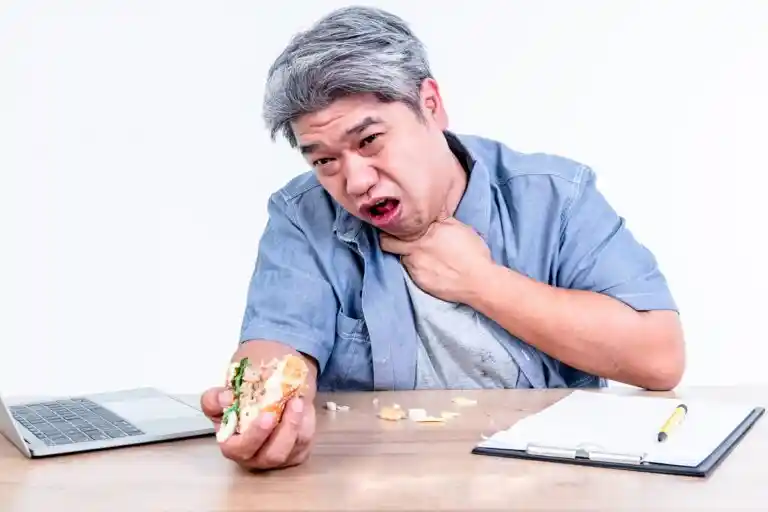
A 43-year-old male was referred with a history of suspected aspiration of foreign body. The patient, a resident of Mumbai, experienced a sharp pain in his throat during an afternoon meal. As per his history, a fishbone was suspected to be stuck in his throat. Family members tried innumerable home remedies but to no avail. An emergency Bronchoscopy was planned for the evening. “As the patient was unwilling to undergo General Anesthesia we approached with a Flexible Bronchoscope via the nasal route. After screening the oropharynx and trachea we were unable to locate any foreign body. It was after extensive searching, that we could locate the abnormality – a long slender colorless needle-like structure that was impacted behind the root of the tongue anatomically called the Vallecula. Biopsy Forceps were used to grasp and remove the foreign body, finally identified as a fish bone. The patient was discharged within an hour much to the relief of his anxious family members.” – Dr. Sameer Arbat, Interventional Pulmonologist. The procedure was successfully performed at Wockhardt Hospitals with the support of Anaesthetist Dr. Avantika Jaiswal. Wockhardt Hospitals Nagpur is equipped with advanced Interventional Pulmonology services like Cryobiopsy, Electrocautery, Rigid Bronchoscopy, Tracheal Stenting, and Thoracoscopy under Dr. Sameer Arbat, who is the pioneer of Interventional Pulmonology in Central India. Challenges in this particular case – Dr. Sameer ArbatConsultant Interventional PulmonologistWockhardt Hospitals, Nagpur To book an appointment call: 0712-6624100 Source: https://thelivenagpur.com/2022/12/21/fish-bone-stuck-in-airway-broncho-scopically-removed-at-wockhardt/
Mumbai Doctors Re-Join Severed Index Finger Of 20-Month-Old Child
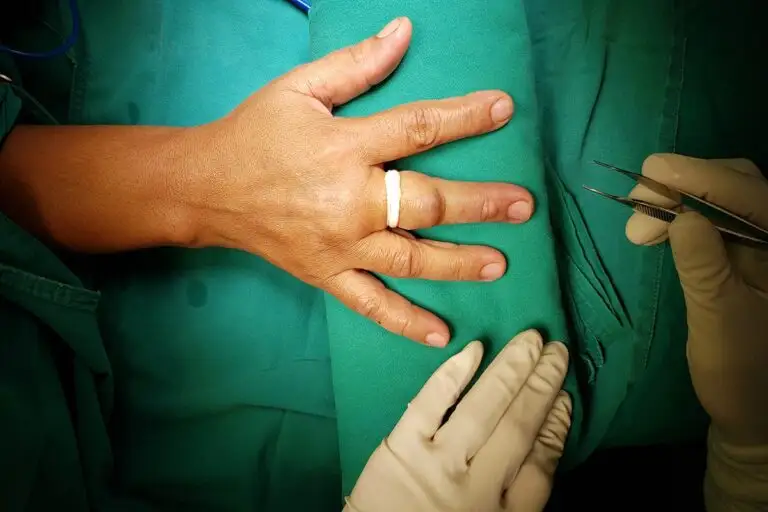
A team consisting of Dr. Sushil Nehete, Consultant Plastic, Hand, and Microsurgeon, and Dr. Pratap Nadar, Consultant Plastic Reconstructive & Aesthetic Surgeon, Wockhardt Hospital, Mira Road successfully re-joined the complete index finger of the right hand of a 20-month-old baby boy, who had sustained the injury due to running table fan. Six months ago, the complete index finger of the baby boy’s right hand was cut off from the middle phalanx when he accidentally put the hand in the running table fan. The baby’s tryst with a running table fan turned into a bloody nightmare. Fascinated by the fan, the baby put his hand inside the fan. The baby’s family members picked up the severed finger and wrapped it in a clean handkerchief and then put it in a plastic bag and rushed him to Wockhardt Hospital in Mira Road after 3 hours of the ghastly incident. Dr. Pratap Nadar, Consultant Plastic Reconstructive & Aesthetic Surgeon, Wockhardt Hospital, Mira Road said, “On arrival in an emergency, blood was oozing from his right index finger and the baby required immediate surgery. Parents were counseled regarding the extent of the injury and the need for urgent surgery to attempt replantation, chances of success, and possible complications. The patient was shifted to OT and replantation was done. One digital artery, nerve, and dorsal vein were repaired. A vein graft was needed for the repair of the digital artery which was taken from the same forearm. Flexor tendon (FDP alone) and extensor tendon were repaired.” Dr. Nadar added, “After the successful replantation that lasted for 3 hours, the patient was observed for finger color, temperature, and capillary refill postoperatively. The patient was discharged 3 days after the surgery. He was on regular follow-ups after the surgery. He is using his finger for all the activities like eating, picking up things, or holding objects. “Paediatric plantations are challenging not only because of their size but also due to higher rates of complications. But it is always worth attempting it in kids, in dominant hands, and if the thumb or index finger is amputated. Now, the baby has extremely good hand function. People are not aware of what should be done during such emergencies. But it is important to bring the cut part immediately to the hospital to rejoin it. The severed part should be wrapped in a handkerchief or gauze, properly put in a plastic bag, over an ice pack, and carried in a container. Do not touch the part with bare hands. Remember that the timely intervention will aid in restoring the functionality of the fingers.” said Dr. Sushil Nehete, Consultant Plastic, Hand, and Microsurgeon at Wockhardt Hospital, Mira Road “The baby reached the hospital on time, and hence, we could save salvage the finger. He could have lost his finger if he would have not been treated promptly at the hospital. It is imperative for parents to be alert and make sure that all the sharp objects are out of the rich of their babies to avoid unfortunate incidents,” Dr. Nehete told further. “We were alarmed due to the ear-piercing scream of my baby. He was crying inconsolably when I saw his finger lying nearby. Apparently, the whirling metal blades of the running table fan literally sliced off my son’s entire right index finger. I thought my baby would lose his finger and would have to compromise throughout life. Fortunately, we picked up the chopped finger and rushed to the hospital at the right time. The skilled team of doctors at Wockhardt Hospitals made the complicated rejoining of the finger possible. I thank them from the bottom of my heart,” concluded the baby’s mother. Dr. Pratap NadarConsultant Plastic Reconstructive & Aesthetic SurgeonWockhardt Hospital, Mira Road To book an appointment call: +918108101104 Source: https://www.mumbailive.com/en/civic/mumbai-doctors-re-join-severed-index-finger-of-20-month-old-child-76291
Bone health tips: Expert on ways to get enough vitamin D for healthy bones
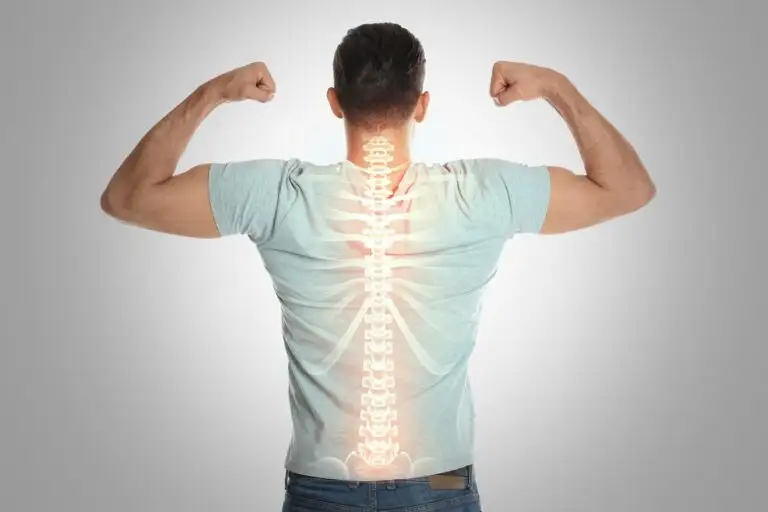
A large number of people are known to be deficient in vitamin D and face a plethora of health issues. Vitamin D deficiency is commonly associated with bone and muscle pain. Here’s how to get the right amount of it to maintain a good bone mineral density in people of all age groups. Vitamin D, also known as the sunshine vitamin is necessary for one’s overall well-being but did you know vitamin D helps to regulate calcium and phosphate in the body and improve your overall well-being? Moreover, enough vitamin D is also necessary for healthy bones and since it supports your bone health, try to include enough amount of this sunshine vitamin in your diet to stay fit and fine throughout life. Currently, a large number of people are known to be deficient in vitamin D and face a plethora of health issues since there is not much awareness regarding this sunshine vitamin and people fail to understand what exactly its role is. In an interview with HT Lifestyle, Dr. Pankaj Gunjal, Consultant Orthopedic Surgeon at Wockhardt Hospitals in Nashik, shared, “A good amount of vitamin D is needed in order to prevent metabolic syndromes, diabetes, autoimmune diseases, cardiovascular diseases, respiratory infections, food allergies, and asthma.” He added, “Vitamin D deficiency is commonly associated with bone and muscle pain. You will be shocked to know that being deficient in vitamin D can lead to skeletal diseases. The right amount of it can help to maintain a good bone mineral density in people of all age groups.” Decoding the connection between vitamin D and bone health, he said, “Vitamin D aids in strong bones and muscles. Without the recommended amount of Vitamin D, one will not be able to absorb the calcium that is required for good bone health.” He cautioned, “Those children who are deficient in this vitamin can suffer from a condition called rickets leading to bone weakness, bowed legs, and other skeletal deformities like stooped posture. One can also have problems such as osteomalacia which is softening of bones, fractures, aches, and pains. Vitamin D decreases bone loss and reduces the risk of fracture in older men and women. So, along with calcium, vitamin D helps to keep osteoporosis at bay. To absorb calcium in the correct way, an adequate amount of vitamin D must be present in the body.” Suggesting how to get enough amount of Vitamin D, he advised, “It will be imperative for you to get enough amount of sunlight on a daily basis. Yes, that’s right! Try to expose yourself to the sun for at least 15-20 minutes between 10:30 am to 01:30 pm. Remember, overexposing can damage the skin so be careful. Make sure to include vitamin D-rich foods in the diet. Eat mushrooms, egg yolks, salmon, mackerel, and tuna. Take vitamin D supplements only after the doctor’s advice. Take a vitamin D3 test from time to time to check it and ensure that you stay hale and hearty. Also, avoid going overboard on vitamin D as high levels of it lead to nausea, vomiting, and weakness.” Dr. Pankaj GunjalConsultant Orthopedic SurgeonWockhardt Hospitals, Nashik To book an appointment call: +918669998260 Source: https://www.hindustantimes.com/lifestyle/health/bone-health-tips-expert-on-ways-to-get-enough-vitamin-d-for-healthy-bones-101671524010364.html
Too Much Alcohol Can Lead to Hangxiety

You drink several rounds of booze, get high, enjoy, and what? End up with a hangover? The majority of you must be familiar with this after-effect. Particularly if you drink too much alcohol, this occurs. And those who’ve been through it, know that it can take longer to wear off. However, among all the side effects of alcohol, one is “hangxiety”. Simply put, it occurs when you experience a headache, nausea, and anxiety all at once. Health Shots contacted Dr. Sonal Anand, Psychiatrist, Wockhardt Hospitals, Mira Road, Mumbai, to learn more about this condition and how to get rid of hangxiety. To understand more about this condition and ways to get rid of hangxiety, Health Shots got in touch with Dr. Sonal Anand, Psychiatrist, Wockhardt Hospitals, Mira Road, Mumbai. What is Hangxiety? Dr. Anand says, “Hangxiety is not a specific term used in Psychiatry. It is more of a scenario that is experienced after a heavy bout of alcohol consumption. It is the combination of having a hangover and anxiety related to the hangover.” Not only does the person feel physically ill, but they also may have high anxiety caused by erratic behavior and the blackout period of the night before. Hangovers can last anywhere from a few hours after waking up to the entire day. Excessive consumption of alcohol, combining drinking with using recreational substances, or having a low tolerance can all lead to experiencing hangxiety the next day. Symptoms of Hangxiety Feeling irritable, panicked, having a sense of impending doom, feeling your own heartbeat, having increased heartbeats and an increased rate of breathing, sweating, trembling, tummy issues, and difficulty focusing are all common symptoms of hangxiety. What is the Link Between Alcohol and Anxiety? “There is a clear connection between alcohol and anxiety, and some people would undoubtedly have hangxiety, especially in light of the fact that binge drinking raises the heart rate, impairs concentration, and impairs the capacity to make rational decisions, says Dr. Anand. Additionally, drinking alcohol initially reduces your stress and helps you feel more at ease, but after some time you could start to feel restless, and a hangover can make that worse. One of the main causes of hangover anxiety is drinking less water or being dehydrated as well. How to Get Rid of Hangxiety? Curing hangxiety requires resting and rehydrating the body. Plus, follow these 7 tips to deal with hangxiety: 3 Home Remedies to Cure Hangxiety: Though these tips are effective for avoiding hangover anxiety and the after-effects of alcohol, prevention seems to be the best cure for it. So be mindful of the amount of alcohol being consumed and make sure that you are not on an empty stomach before drinking. Dr Sonal AnandPsychiatristWockhardt Hospital, Mira Road To book an appointment call: +918108101104 Source: https://www.healthshots.com/mind/mental-health/10-ways-to-get-rid-of-hangxiety-or-hangover-anxiety/
Drinking 8 Glasses Of Water In A Day: Fact Or Myth? Expert Answers

You’ve most likely heard that you should drink eight 8 glasses of water per day. But is this advice true, or is it just a myth? This article examines the evidence for the ‘eight glasses a day rule. Your body is mostly made up of water. Water is the primary chemical component that accounts for approximately 50 percent to 70 percent of your body weight – the fluid you cannot live without. Water is required for the proper functioning of every cell, tissue, and organ in your body. Water flushes wastes from your body via urination, perspiration, and bowel movements. Dehydration can occur when your body does not have enough water to carry out normal functions. You’ve most likely heard that you should drink eight 8 glasses of water per day. That equates to half a gallon of water (about 2 liters). This claim is widely accepted as fact, and it is simple to remember. But is this advice true, or is it just a myth? This article examines the evidence for the “eight glasses a day” rule. Drinking 8 Glasses of Water in a Day: Fact or Myth? There has been an ongoing debate regarding how much water one should drink. As per experts, it will be a good idea to at least drink 8 glasses of water on a daily basis. But, according to a finding of the new study, it is okay and not necessary to drink 8 glasses of water. So, it is fine, if you don’t drink water unless you feel thirsty. Do not drink water when it is not required. One needs to seriously monitor his/her water intake. You need to see how much water you are having. Dr Bipin Jibhkate, Consultant critical care medicine, and ICU director of Wockhardt Hospitals, Mira Road says ‘It will be essential for one to calculate the amount of water received from food and other beverages like coffee and tea. You need to know that there is no standard quantity or one-size-fits-all measure for people. The water requirement will differ from person-to-person. The factors taken into consideration are one’s age, sex, size, physical activity levels, and the climate of the area that one lives in. Drinking a lot of water means you will make continuous trips to the loo. As that can be a huge disturbance during the nighttime. It is better to speak to the doctor about how much water you should drink and then accordingly decide what you need to do.’ Remember that not drinking enough water can cause dehydration, and dry skin and you will not be able to flush out toxins from the body. Did you know? Men have larger bodies and less body fat than women, and they end up drinking more water. It is better to drink water when thirsty and also have fruits, vegetables, beans, and soups that contain enough amount of water. The main motto should be to stay hydrated and healthy. Avoid going overboard on water. Stick to the instructions given by the expert only. Suggestion: If you want to keep things simple, just listen to your body and follow your thirst. When you’re thirsty, drink some water. Stop when you’re no longer thirsty. Drink more fluids during hot weather and exercise to compensate for fluid loss. Dr. Bipin JibhkateConsultant Critical Care Medicine & ICU DirectorWockhardt Hospitals, Mira Road To book an appointment call: +918108101104 Source: https://www.india.com/health/drinking-8-glasses-of-water-in-a-day-fact-or-myth-expert-answers-2-5801451/







